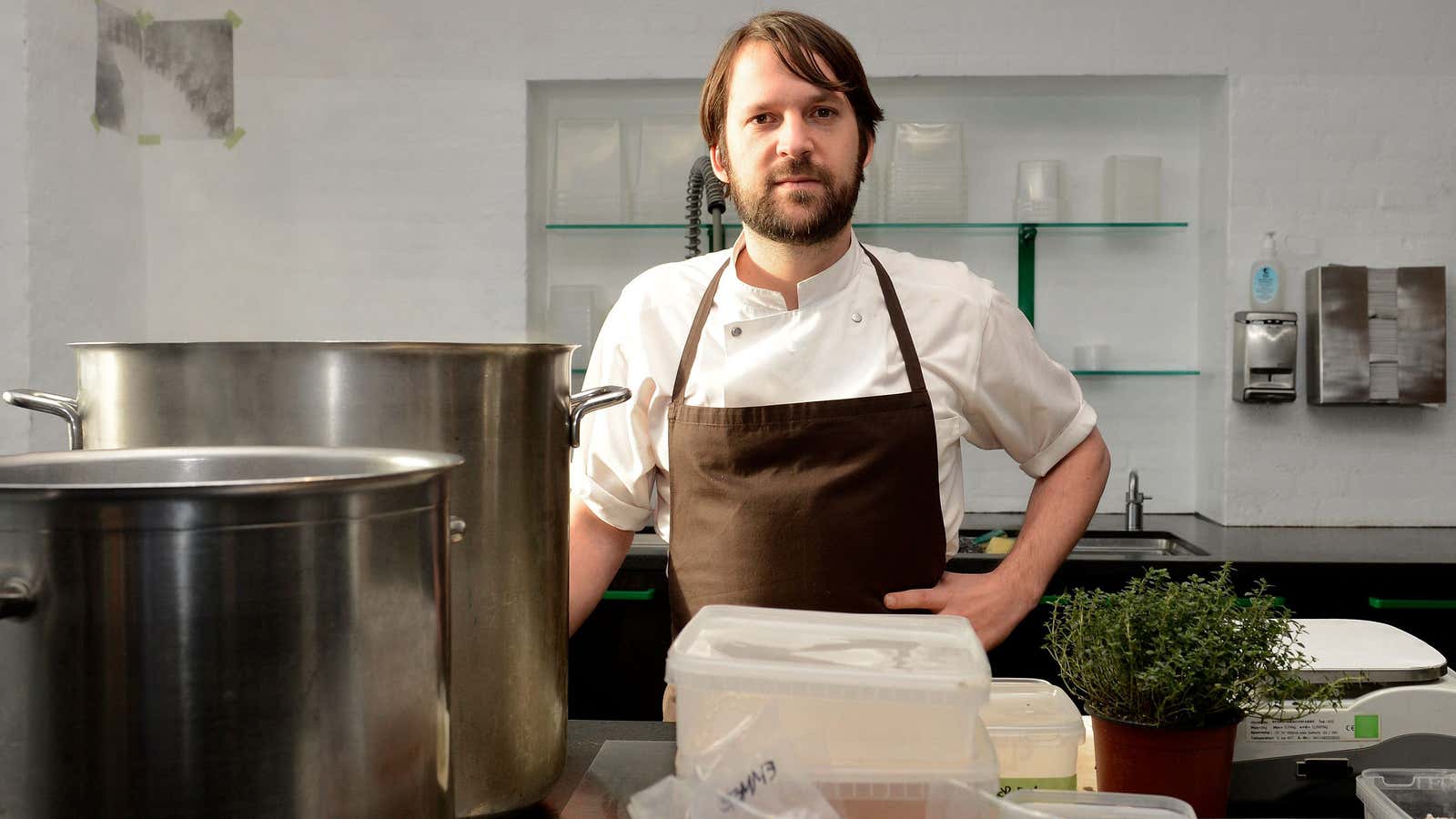Globe-trotting foodies are on notice. Noma announced yesterday that it will begin taking reservations for next year starting on Sept. 18. The mythic restaurant, reincarnated this year in Copenhagen’s hip Christianshavn neighborhood after closing its original location in 2017, is often described as the best restaurant in the world, and is the indisputable epicenter of new Nordic cuisine, a cooking philosophy that emphasizes tradition, locality and ethical food production.
Now, the new Nordic cuisine has an established place in the firmament of fine cuisine, but it began as a rebellion. Fourteen years ago, 12 chefs issued a manifesto that would shake up the order of world cuisine. Spearheaded by the Danish chef Claus Meyer, the New Nordic Kitchen Manifesto outlined 10 principles that championed the terroir and techniques of Denmark, Finland, Iceland, Norway and Sweden and their territories.
But coded within the manifesto’s introduction is a “middle finger to French cuisine” that may have been lost on most, said the sustainable food expert Melina Shannon-DiPietro during a rousing talk at Techfestival in Copenhagen Sept. 7:
As Nordic chefs we find that the time has now come for us to create a New Nordic Cuisine, which in virtue of its good taste and special character compares favourable [sic] with the standard of the greatest kitchens of the world.
The phrase “standard of the greatest kitchens of the world” is a reference to the tyranny of French technique, said DiPietro—who has unique insight on the matter, as the executive director of MAD, a non-profit founded by Noma’s co-founder René Redzepi, one of the original signatories of the manifesto.
“Maybe the new Nordic food manifesto wasn’t as explicitly anti-French as the American Revolution was anti-British, but it was a reaction, and a strong one,” DiPietro explains to Quartz. “It was a reaction to the constraints which had predominantly been determined by French cuisine.”
The manifesto laid out the region’s “authentic cuisine,” and claimed a creative space for Nordic chefs to showcase their talents, recipes and particular sensibility. Instead of the stringent French techniques hammered into aspiring chefs from around the world in culinary schools, new Nordic championed traditional food preparation methods such as “drying, smoking, pickling, curing, smoking with a larger goal of returning balance to the earth itself,” as the New York Times put it.
The manifesto was also a response to agricultural conditions in the region. Danish production of pork and butter for export had come to dominate the nation’s cuisine and had decimated the country’s once rich agricultural diversity. Even today, the country has five pigs per person—25 million animals.
New Nordic sought to diversify palates by reintroducing dishes made from the region’s locally native ingredients, such as foraged herbs, Limfjord oysters, cloudberries. Chefs got headlines for exotic components such as cricket paste, wild reindeer blood, and live ants (which apparently taste like lemongrass).
The new Nordic manifesto also sparked a global culinary movement, especially after Noma was crowned the “best restaurant in the world” four times. And it emboldened chefs from around the world to focus their attention on their region’s native ingredients, traditional dishes, and local producers.
“Some of the same chefs who had signed the manifesto had lived in France and previously prescribed to the notion of French cuisine as the cuisine. With the manifesto, they pitched these ideas out the window,” says DiPietro. “It wasn’t simply an improvement on the French, but a departure from the French. It was a return to the cupboard, woods, and shores of Scandinavia, and all its techniques, treasures, and forgotten ingredients. It was a redefinition of good taste in the northern hemisphere.”
